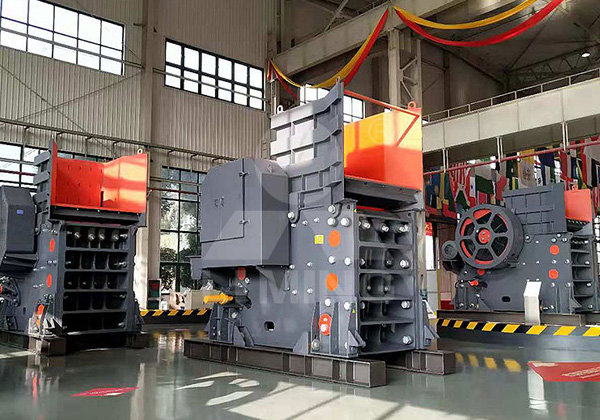A jaw crusher is a type of compression crusher that uses compressive force to break down materials such as rocks, ores, and minerals. There are two main types of jaw crushers based on the motion mechanism: single toggle jaw crushers and double toggle jaw crushers. Both of these designs have their own unique features, advantages, and ideal applications, depending on the material and crushing requirements.
Single Toggle Jaw Crusher
In a single toggle jaw crusher, the jaw is suspended from an eccentric shaft at the top, allowing for a more complex motion. This type of crusher consists of a stationary jaw and a moving jaw, which moves in an elliptical pattern due to the movement of the eccentric shaft. The single toggle jaw crusher uses a single shaft for both the movement of the swing jaw and the crushing action.

Working Mechanism: The eccentric shaft creates a vertical as well as horizontal movement in the swing jaw. As the swing jaw moves towards the stationary jaw, the material is crushed between the two, and when the jaw moves away, the material drops down for further processing. The design allows for a more compact and lighter structure, making it suitable for mobile crushing applications.
Advantages:
- Simpler design: Fewer parts make the single toggle jaw crusher easier to maintain and repair.
- Higher throughput: The elliptical motion results in a more aggressive crushing action, leading to higher capacity compared to double toggle jaw crushers.
- Lower weight: The single toggle design is lighter, making it easier to transport and install, especially in mobile crushers.
- Energy efficiency: Due to the simpler mechanism, the single toggle jaw crusher tends to consume less energy during operation.
Double Toggle Jaw Crusher
The double toggle jaw crusher operates with two shafts: an eccentric shaft and a second toggle plate, which transfers the movement from the eccentric shaft to the swing jaw. In this design, the swing jaw moves in a more straight-line motion rather than an elliptical one. The crushing action occurs when the two jaw plates move towards each other and crush the material between them.
Working Mechanism: The eccentric shaft drives a pitman, which in turn moves the swing jaw. The second toggle plate provides a pushing force to assist the crushing motion. The movement is more linear, which reduces wear on the jaw plates and produces a more uniform crushing force.
Advantages:
- Less wear: The linear crushing motion of a double toggle jaw crusher results in less wear on the jaw plates, increasing their lifespan.
- More stability: The double toggle mechanism provides greater stability and reduces vibrations, making it suitable for heavy-duty crushing applications.
- Crushing hard materials: The double toggle design is ideal for crushing hard, abrasive materials like granite, basalt, and metallic ores. The design exerts a higher compressive force, which is necessary for handling harder rocks.
- Even distribution of crushing force: The linear motion leads to a more uniform distribution of the crushing force across the jaw plates, resulting in consistent output.
Applications
- Single toggle jaw crushers are widely used in mobile and portable crushing operations, especially for softer materials like limestone and coal. They are also common in quarries where high throughput is essential.
- Double toggle jaw crushers are more suitable for crushing hard, abrasive materials like granite, basalt, and iron ore. Their heavy-duty design and higher crushing force make them ideal for mining applications, where long-term durability is critical.
In conclusion, the choice between a single toggle and a double toggle jaw crusher depends on the material to be processed, the crushing requirements, and the operational conditions. Single toggle jaw crushers offer simplicity and higher throughput for softer materials, while double toggle jaw crushers provide better stability, wear resistance, and crushing force for harder, more abrasive materials.

